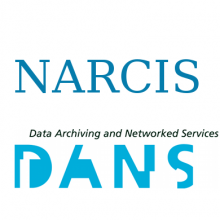Resource information
Clay is a common lithology in the Dutch shallow subsurface. It is used in earth constructions such as dikes, and as raw material for the fabrication of bricks, roof tiles etc. We present a new national assessment of Dutch clay resources, as part of a project that provides mineral-occurrence information for land-use planning purposes. The assessment is based on a 3D geological model, which consists of voxel cells with lithological composition as primary attribute, and has been obtained by interpolating data of more than 380,000 digital borehole descriptions. The occurrence of shell material and the extent to which clay is peaty were used as quality attributes, enabling us to tentatively distinguish between clay that is potentially suitable as ceramic material, and clay that is not. As clay is extracted using dry (i.e. non-dredging) techniques, the model space has been dimensioned to fully encompass the unsaturated. zone. A high-resolution model (with voxel cells of 250 · 250 · 0.2 m), based mainly on abundant, good-quality hand drillings, was constructed down to 3 m below the surface. This depth range suffices for clay-resource assessments in the lowlands, which have relatively high groundwater levels. Cells from a lower-resolution model (250 · 250 · 1 m, based on fewer data) were added to reach appropriate depths in upland areas. We arrive at about 42.1 km3 of clay occurring in the model space (land areas only). Clay occurs mainly in the coastal domain and below the Rhine and Meuse river plains. Geological exploitability has been assessed within the unsaturated zone, taking overburden and intercalations with non-clay materials (especially peat) into account. The resulting exploitable stock is 12.3 to 18.0 (± 2.0) km3; an estimate in which the main source of uncertainty is presented by a lack of proper groundwater-table data. This amount equates to roughly 6000 annual consumption equivalents. Even when considering that the larger part of the clays is unsuitable for firing, and about one quarter is situated below built-up lands or nature preserves, clay is not a scarce resource in the Netherlands and supplies should present no problem in the near future.


